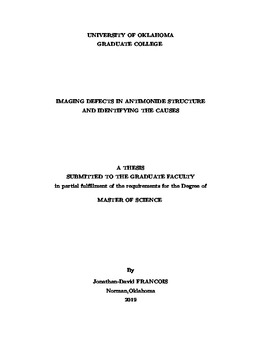| dc.description.abstract | This thesis is divided into three studies, all using microscopy techniques. All the structures were grown by molecular beam epitaxy.
In the first study, we compared two InSb quantum well devices with the same structure. A conclusion was made that the theoretical layer structure that was used for the two samples is marginally inaccurate and results in structures that are marginally strain balanced. The presence of lines due to misfit dislocations were noticed in both samples even though the second sample, B051, has a better surface condition with minimized lines due to misfit dislocations compared to the first sample B049.
In the second study, we compared four different GaSb homoepitaxial samples to explore the effects of different growth conditions. The samples were a 1-μm GaSb layer grown on a GaSb substrate. These experiments were aimed at finding the best growth parameters to make the buffer layer as smooth as possible. The best sample of this study was M373, with the highest growth temperature of 498 ̋C and a V/III ratio of 2.5. It had the lowest density of defects on its surface. Another sample of this study, M374, had also interesting properties, with the smoothest background and shallowest irregularities of this study. Unfortunately, a higher density of defects in comparison to M373 was observed due to a lower V/III ratio, which caused the desorption of group V material and increased the metallic droplet density on its surface.
Lastly, in the third study, experiments involving three interband cascade photovoltaic prototypes were conducted. Two of them had 8-stages with one employing Antimony soaks during the growth (Y067V) and the other did not (Y064V). The last sample, Y074V, was a 15-stages device with antimony soaks during the growth. The effect of the Antimony soak process and of increasing the number of stages in this study was compared. An improvement in the surface condition with the Antimony soak was observed. Indeed the density of hillocks on the surface of Y067V was 50 times smaller than the density of hillocks of Y064V by adding this Antimony soak process during the growth. The reason was that the residual Arsenic present in the chamber interfered with the composition of the layer one was trying to grow after an arsenide layer. AlAs or AlAsSb layers were created which made the overall semiconductor not strain balanced. The last sample of this study, Y074V, had also some interesting properties, with a shallower average hillock height and a smaller hillock size observed on its surface. However, a hillock density 5 times higher than Y067V was observed which means that some improvements are needed for structures with many stages. | en_US |
